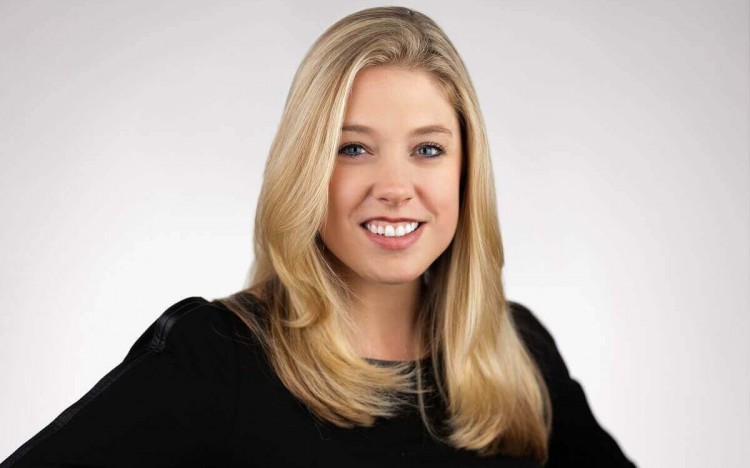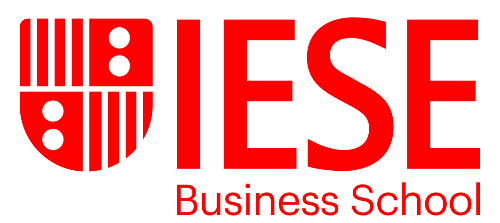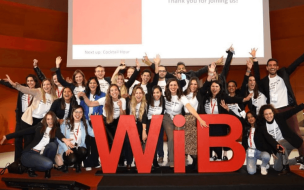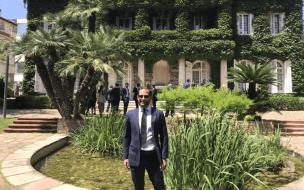She remembers joining the assembly line and working the binding machine during school holidays.
In the warehouse, she’d compete with her sister to attach as many mailing labels to mailers as possible in the shortest amount of time. They were paid a penny for each, in an age before the internet boom and digital marketing.
Jill grew up seeing every day how you run a business, how you structure client work, operations, and deal with employees. Both her parents have MBA degrees from Wharton, and Jill grew up seeing how their experience transformed them into confident, successful, burgeoning entrepreneurs.
Fast forward and Jill now works in Washington DC as vice president for investments at a major financial firm where she manages a portfolio of half a billion dollars.
She says getting her own MBA, from IESE Business School, is the reason she’s there.
Following in her parents’ footsteps
After her undergrad in the US, Jill thought she wanted to be a lawyer. She began work as a paralegal for an international law firm while preparing for law school applications and exams. But she soon realized that the business side of the job was what piqued her interest the most.
She joined a deal team and spent one month in Geneva working with international teams in Paris, London, New York, DC, and the client in Colombia, opening her eyes, she says, to the importance of cross-cultural communication.
Her team won the case for their client, and this was the start of Jill’s transition into the business world. The lawyer who'd been so supportive of her career progress connected Jill to a trade association in DC, where she spent two years as executive office coordinator, reporting directly to the CEO and COO.
Alone in New York after the financial crash
Jill moved to New York in 2007, to work with companies in the VC and private equity space. The looming financial crisis meant opportunities were scarce. There she was, in a big city with no job, convincing herself she would figure it out.
She landed a sales desk job—not where she’d planned to be—reporting to 10 associates and vice presidents.
“That was not only about trying to learn the discipline but to adjust to New York and the fast-paced atmosphere,” she recalls.
“I think it’s something I’m most proud of. I didn’t do any coursework anywhere in finance, and considered myself more a communicator, humanities focused, and I had to learn on the job how to crunch numbers and speak in a language that investors would understand.”
In three years, she worked her way up from sales assistant to associate.
Why do an MBA?
Jill says that to progress further, she needed that sense of academic legitimacy that was missing. Cue the IESE Business School MBA.
In her New York office, Jill describes long trading desks, with no more than 36 inches of personal space. In that cramped space, though, was squeezed an iota of luck. Next to Jill was a female colleague with an International MBA.
She knew Jill was flirting with the idea of studying the degree herself, and so she peppered her ears with whispers, convincing her to study abroad. The international appeal, alongside the humanistic appeal and focus on the triple bottom line at IESE, struck a strong chord.
Jill says the classroom on the MBA drops students into an international setting geared towards sharpening each candidate’s soft skillset.
“IESE teaches you it’s impossible to do everything yourself. The goal is to break you down and build you back up to realize you have to rely on others to get to where you want to be.”
Heated debates with classmates during case studies and learning how to navigate tricky conversations with people from various backgrounds has also set Jill up for success.
“The better you’re able to think on your toes and be responsive, the better a meeting’s going to go, and that skill literally started in the classroom at IESE, doing case method so many times over and over again.”
Changing career after business school
Post-MBA, Jill landed a role at Barclays Investment Bank in London, something she says would never have been possible without IESE—the school’s career service has close ties with the bank and the recruiters met Jill on campus.
For over two years she worked in London, before returning to the US with Barclays. After a year, Jill moved into the role she’s in now, as first vice president for investments at Stifel Financial Corporation—which acquired Barclays’ US wealth unit in 2015—where she manages a portfolio worth half a billion dollars.
Growing up seeing the impact of an MBA in real-time showed Jill the merits of hard work and grit from an early age and encouraged her to pursue the MBA at IESE Business School.
Jill is the only female advisor at her firm's DC office, but she rises to the challenge. She says it always leaves a smile on her face when she wins a new client from the ‘old boys’ club’.
“No one ever thinks I’m going to go in and grab the investment mandate away from these huge teams of guys who have been in the industry for 30 years,” she says. “It’s something I relish.”







